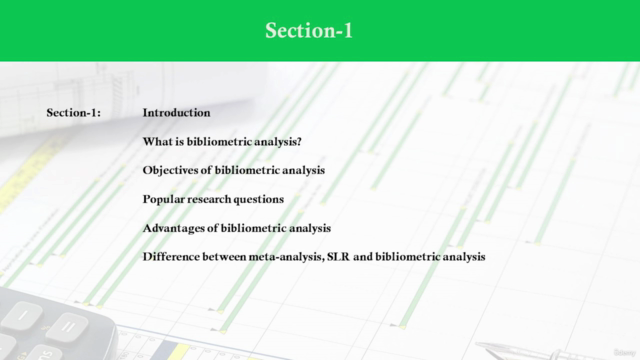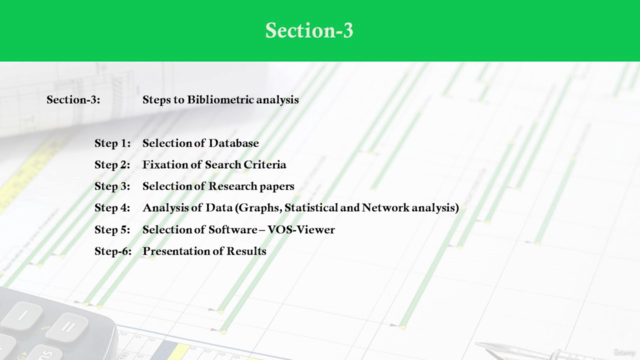Bibliometric Analysis: A Theoretical Stepwise Guide

Why take this course?
Mastering Bibliometrics: A Theoretical and Practical Guide
🚀 Course Headline: Dive into the World of Bibliometrics – Your Ultimate Step-by-Step Guide to Co-Citation Analysis, Science Mapping, and Network Metrics with VOSviewer!
Course Instructor: Muhammad Shakil Ahmad
Introduction to Bibliometric Analysis 📚
Bibliometrics is the quantitative analysis of the literature in a particular discipline, typically for the purpose of scientific or social-scientific research. This course will guide you through the intricacies of bibliometric analysis, offering a solid foundation in both theory and application. You'll explore how this method can answer critical research questions and understand its significance over other research methods like meta-analysis and systematic literature reviews.
🔍 Key Takeaways:
- Grasp the core concepts and applications of bibliometric analysis.
- Learn to identify key trends, patterns, and gaps within a scholarly domain.
- Understand the strengths and limitations of bibliometric analysis in research.
Bibliometric Analysis Techniques 📈
In this section, you'll explore a range of bibliometric techniques, each providing unique insights:
- Performance Analysis: Measure productivity and impact of authors, institutions, or countries.
- Science Mapping: Visualize the structure and evolution of research areas.
- Citation Analysis: Analyze how often papers are cited to assess the impact.
- Co-citation Analysis: Explore how different documents cite each other to uncover hidden relationships.
- Bibliographic Coupling: Find documents that share a number of citations or bibliographic references.
- Co-word Analysis: Identify words and phrases frequently occurring together in titles, abstracts, or keywords.
- Co-authorship Analysis: Investigate the collaborative dynamics within research areas.
- Network Metrics & Clustering: Use statistical measures to evaluate the structure of scientific networks.
- Visualization with Tools like VOSviewer: Create captivating visualizations to represent citation data.
Conducting Bibliometric Analysis Step-by-Step 🔗
Learn the process of conducting a bibliometric analysis from start to finish:
- Define Aim and Scope: Clearly articulate the objectives and boundaries of your research.
- Choose Appropriate Techniques: Select the most suitable methods based on your research question.
- Collect Data: Gather data from databases such as Web of Science, Scopus, or Google Scholar.
- Run the Analysis: Apply the chosen techniques to analyze the collected data.
- Report Findings: Present your findings in a clear and compelling manner.
Hands-On Tools for Bibliometric Analysis 🛠️
Get hands-on experience with leading bibliometric analysis tools:
- VOSviewer: A visualization tool to create high-quality visualizations of complex networks of citations and keywords.
- CiteSpace: An open-source digital humanities software for network visualization, knowledge discovery, and data science.
- SciMAT: A Java application designed for the mapping, analysis, and visualization of scientific collaboration networks.
By the end of this course, you'll be equipped with a robust skill set to conduct in-depth bibliometric analyses. Whether you're a seasoned researcher, an academic looking to expand your analytical toolkit, or a professional aiming to understand and measure research impact, this course will provide you with the knowledge and skills needed to excel in your field.
🌟 Final Thought: Embark on a journey through the labyrinth of scholarly literature, harnessing the power of bibliometric analysis to uncover meaningful patterns and insights that can shape research trajectories and inform strategic decisions. Enroll now to become a master in bibliometrics! 📊💡
Course Gallery




Loading charts...